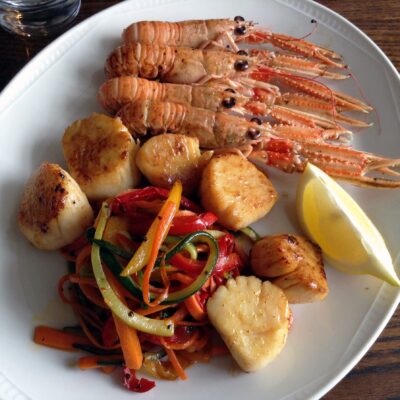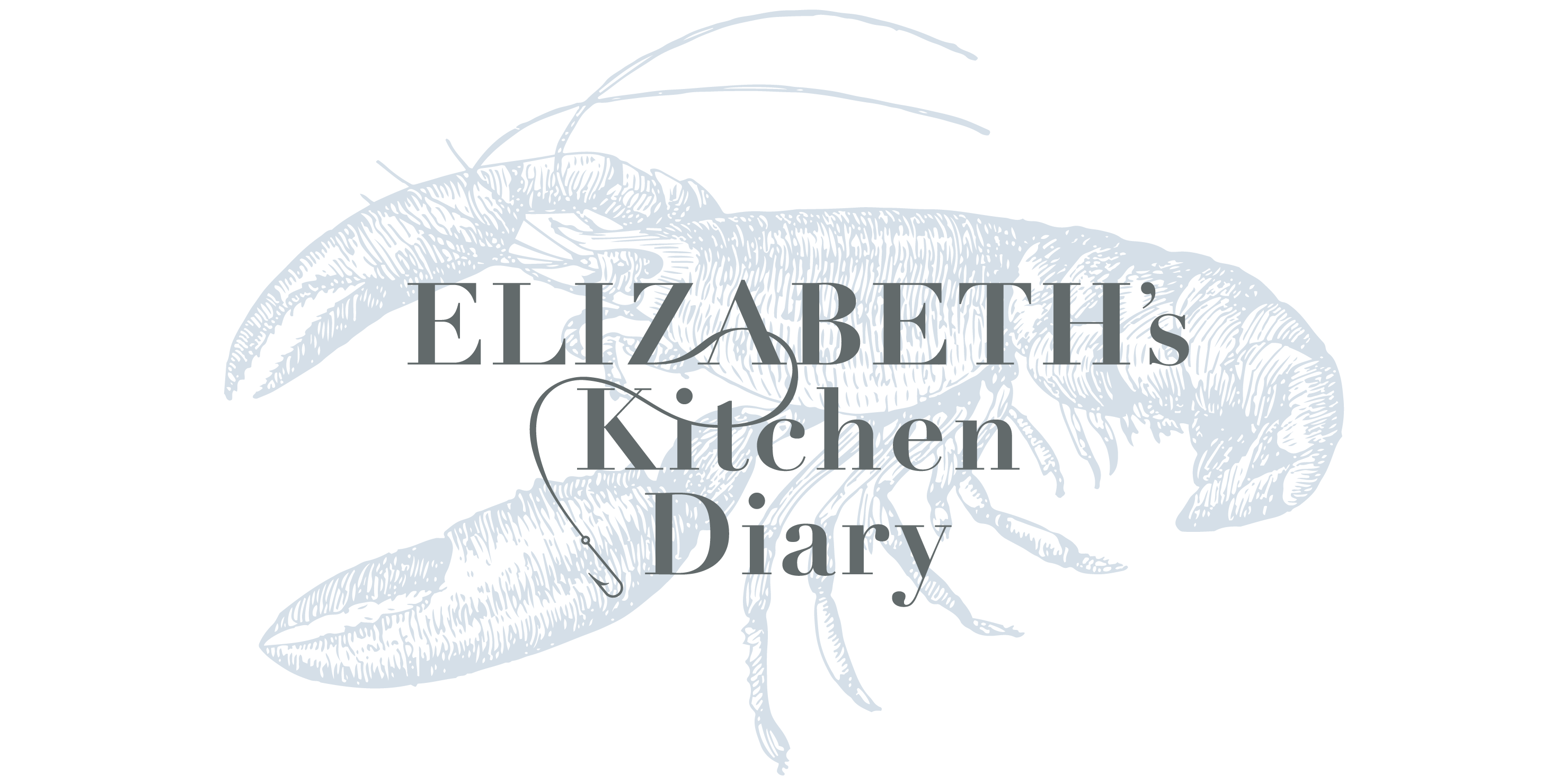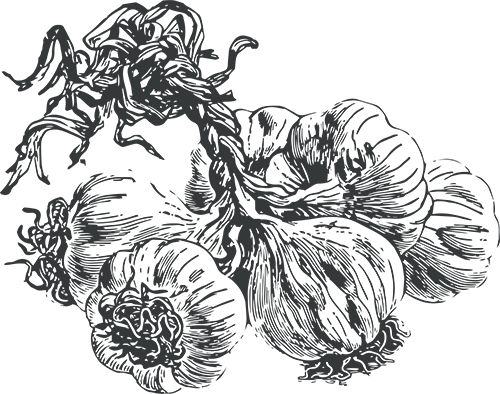MSC-certified sustainable king scallops and langoustines are the stars in this simple yet incredibly flavoursome recipe from Daniel Okroj, the head chef of the Busta House Hotel in Shetland.
This article and recipe were originally published in 2014 in the online magazine Fish on Fridays, which no longer exists. In 2023, the article was updated and republished for Elizabeth’s Kitchen Diary readers.

Table of Contents[Hide][Show]
- Here’s one I rescued earlier…
- Marea B, a Shetland-registered scallop dredger
- The world’s first MSC-certified king scallops
- Blueshell Mussels – a shellfish processing plant
- Shetland restaurants serving sustainable seafood
- What you’ll need for this recipe
- How to make pan-fried scallops and langoustines with stir-fried vegetables
- Can you eat the orange bit of a scallop?
- What is the white bit of a scallop?
- Are scallops hermaphrodites?
- What can I substitute Pernod with in recipes?
- Pan-seared scallops and langoustines with stir-fried vegetables
- Pin this scallop recipe for later
- Other seafood recipes you might like
Here’s one I rescued earlier…
Late one Saturday night, moments after falling asleep, I was abruptly woken by the piercing sound of my RNLI pager: a Launch ALB request from the Shetland Coastguard.
The sound of the pager is like a shot of adrenaline straight to the heart; it doesn’t matter how tired you are; you suddenly find yourself poised and alert.
It was pitch black when Britain’s most northerly all-weather RNLI lifeboat, the Charles Lidbury, left the pier with its crew of volunteers. The sea was like glass; there wasn’t a hint of a breeze. We were briefed that a scallop dredger had run aground on the west coast of Shetland, and it was listing dangerously as the tide ebbed.

Marea B, a Shetland-registered scallop dredger
This is where I met scallop dredger and skipper of the Marea B, Malcolm Robertson. He had been returning from a day’s dredging when he encountered an unlit set of mussel ropes. He took evasive action and became stranded on rocks in shallow water.
When the two scallop dredger crew were safely onboard the lifeboat, we warmed ourselves with hot coffee and watched dawn break. That was one of the best cups of coffee I’ve ever had, fingers warming on the outside of the mug, our breath visible in the cool morning air. We listened to the men tell fishing stories while we waited for the tide to return so we could refloat the boat.

A year later, Malcolm and I drank coffee and swapped stories again, but this time, it was in comfort at his kitchen table.
Malcolm comes from a long line of Shetland-born and bred fisherman/crofters. He grew up next to the seashore and learned how to row a boat long before he learned how to pedal a bicycle. He always thought, as a child, he’d go to the fishing when he grew up, just like his father.
It’s been a lifelong dream of Malcolm’s to have his own boat. He’d fished for others and trained as a salmon farmer at college, but just over two years ago, he realised he wasn’t getting any younger, and so he just went for it: he bought the Marea B and began scallop dredging.
“It’s hard work, but you’re your own boss. It’s the freedom of it: the open sea, the fresh air.”
Malcolm Robertson, scallop dredger



The world’s first MSC-certified king scallops
In March 2012, the Shetland Shellfish Management Organisation (SSMO) inshore scallop fishery became the world’s first king scallop fishery to gain MSC certification. This was achieved through collaboration with the North Atlantic Fisheries College (NAFC), which carefully monitors Shetland inshore waters.
A scallop permit is required to dredge within six nautical miles of Shetland, and it is only permitted within certain hours and with a specific number of dredges per tow.
Scallop dredgers have received a considerable amount of bad press over the years for the environmental damage they have the potential to cause. Malcolm’s boat is different: it’s small for a start. He uses a new N-Viro Dredge instead of the traditional dredge. This uses flexible spring tines instead of metal teeth, so it’s gentler on the seabed. The dredge is lighter, too, so it’s more fuel-efficient. It also causes less damage to the scallops themselves, improving the yield of each tow.
At the time of writing (2014), Malcolm’s boat was one of at least four in Shetland using this new dredge. At the end of a long day fishing, his catch was landed at the nearest pier, where Blueshell Mussels was waiting to collect and process it.

Blueshell Mussels – a shellfish processing plant
The family-owned Blueshell Mussels, based in Brae, Shetland, is the UK’s leading rope-grown mussel farmer, but they also process and pack crab and king scallops. The scallops are landed fresh daily by a number of small inshore vessels, including the Marea B, which are all part of the SSMO.
“Shetland may be pioneering sustainability. People care about the environment – including their carbon footprint, so the boats are being upgraded to be more fuel-efficient.
Michael Laurenson, owner of Blueshell Mussels
“As a small fishing community, we are dependent on the sea,” Michael continues, “Fishermen are aware of preserving these shores and stocks for future generations. Smaller boats limit the damage they can cause, and they move around, allowing the seabed time to recover.”

Shetland restaurants serving sustainable seafood
Blueshell Mussels supply Frankie’s Fish and Chip Shop, Shetland’s multiple-award-winning fish and chip shop (pictured above), located a few minutes up the road from them, with MSC-certified mussels, crab and scallops. They also supply the Busta House Hotel & Restaurant in Brae.
It was at Busta House where I had my first taste of scallops.
“It is important for us to promote the healthy eating and fresh food image which Shetland is renowned for, and Blueshell Mussels always deliver the freshest produce. The local fishermen are our neighbours. We trust their judgement and skills. And by working together with local producers, we can help sustain our island economy for future generations.”
– a spokesperson for Busta House
For more information on Shetland restaurants serving sustainable Shetland seafood, download the Taste of Shetland Seafood Provenance Scheme leaflet. This leaflet was created in collaboration with Shetland Fishermen, a lobbying group widely recognised as the voice of Shetland fishermen.

What you’ll need for this recipe
- Shetland scallops – MSC-certified king scallops from Shetland, either dredged or hand-dived. You can buy these from Island Fish Ltd in Lerwick.
- Langoustines – Nephrops norvegicus, known variously as the Norway lobster, Dublin Bay prawn, langoustine or scampi, is a slim, coral-coloured lobster that grows up to 25 cm long.
- Courgette – cut into strips to be stir-fried. You can find Shetland-grown courgettes at Scoop Wholefoods in Lerwick. Leave the skin on when julienning.
- Red bell pepper – high in antioxidants and low in starch. Red peppers contain anti-inflammatory compounds and add a nice red colour to the dish.
- Yellow bell pepper – sweet in flavour and contains more vitamin C than its red cousin.
- Carrot – packed with nutrition and fibre, julienned carrots add a fresh flavour and gorgeous orange colour to the stir-fried vegetable mix.
- Olive oil – this fruity oil pairs well with the sweetness of the vegetables.
- Pernod – an aniseed-flavoured spirit that pairs exceptionally well with seafood.
- Garlic – just one clove, added towards the end of cooking for a little flavour.
- White wine – after sautéing vegetables, splash a few tablespoons of wine into the pan to deglaze. The wine also concentrates while cooking and adds to the flavour of the finished dish.
- Black pepper – freshly ground, as always, to enhance the dish’s flavours.
- Shetland sea salt – made from the pristine seawater collected off the shores of Shetland.
- Curry powder – adds a golden hue and mild flavour to the scallops.

How to make pan-fried scallops and langoustines with stir-fried vegetables
- Julienne your vegetables (chop them into long, thin sticks.
- Bring a large pan of water to the boil and season with salt and pepper. Cook the langoustines for 4 minutes.
- Meanwhile, heat olive oil in a sauté pan.
- Season the scallops with salt, pepper and curry powder. Cook in the hot oil for 2 minutes on each side.
- Add the langoustines to the pan along with the Pernod and cook for a further minute.
- Add the vegetables and stir-fry for approximately 4 minutes.
- Add the garlic and splash of white wine and cook for a further minute.
- Serve!
Click here for the full printable recipe instructions.

Can you eat the orange bit of a scallop?
Yes! The orange bit of a scallop is the coral, and it’s packed full of flavour and nutrition. Don’t throw it away!
It became popular in the nouvelle cuisine movement to remove the coral of the scallop before cooking. Serving the coral along with the white fleshy part is gaining popularity.
What is the white bit of a scallop?
The white bits of a scallop are the phasic (striated) and tonic (catch) adductor muscles. The phasic muscle of the scallop contracts very quickly for swimming, while the smooth catch muscle keeps the shells closed for long periods of time.
Are scallops hermaphrodites?
True story. The grey part of the coral is the male reproductive organ, while the orange part is the female component. They are true hermaphrodites, and they lack a brain.
What can I substitute Pernod with in recipes?
Pernod aka Pernod Anise is a French anise-flavored liqueur invented in 1920, after absinthe was banned in 1915. Making it without wormwood made it a legal liquor, as they thought the wormwood sage, used in absinthe, was hallucinogenic. Substitute Pernod with Pastis, absinthe or white wine. Anisette and ouzo are also good pernod alternatives.
Recipe Difficulty Levels
Easy
Requires basic cooking skills and ingredients you most likely already have in your kitchen.
Moderate
Requires more experience, preparation and/or cooking time. You may have to source special ingredients.
Challenging
Recipes requiring more advanced skills and experience and maybe some special equipment.

Pan-seared scallops and langoustines with stir-fried vegetables
Ingredients
- 4 Shetland scallops large
- 4 Shetland langoustines small
- 1 courgette
- 1 red pepper
- 1 yellow pepper
- 1 carrot medium
- 2 tbsp olive oil
- 50 ml Pernod
- 1 garlic clove finely chopped
- 1 splash white wine
- freshly ground black pepper
- Shetland sea salt
- curry powder for seasoning
Affiliate Links
This recipe card may contain affiliate ingredient and equipment links. As an Amazon Associate I earn from qualifying purchases.
Equipment
Instructions
- Chop 1 courgette, 1 red pepper, 1 yellow pepper and 1 carrot julienne style (into small sticks).
- Bring a large pan of water to the boil and season with salt and pepper.
- Place 4 Shetland langoustines in the water and cook for 3-4 minutes.
- Meanwhile, heat 2 tbsp olive oil in a sauté pan.
- Season 4 Shetland scallops with Shetland sea salt, freshly ground black pepper and curry powder and fry them in the hot oil for 2 minutes on each side.
- Add the langoustines to the pan of scallops and add 50 ml Pernod; fry together for 1 minute.
- Over a medium heat, add the vegetables. Season well and stir-fry for approximately 4 minutes.
- Add 1 garlic clove, finely chopped, followed by 1 splash white wine and stir-fry for a further minute to finish.
- Serve on a warmed plate and enjoy!







 Easy Carrot Cake with Cream Cheese Frosting
Easy Carrot Cake with Cream Cheese Frosting

Leave a Reply